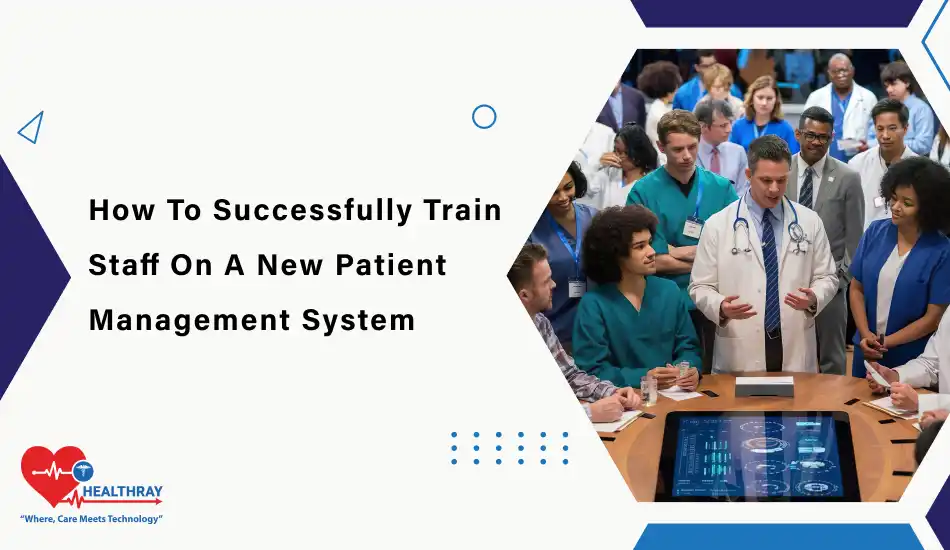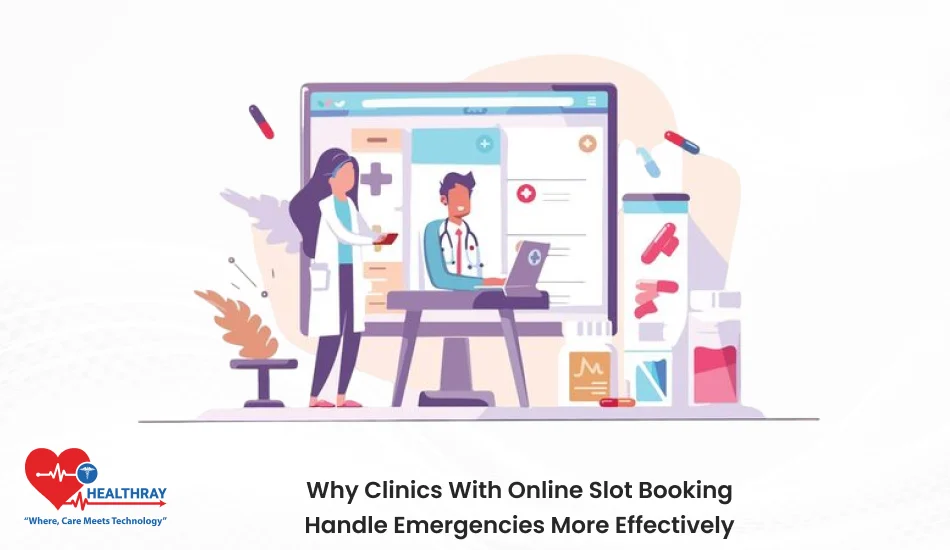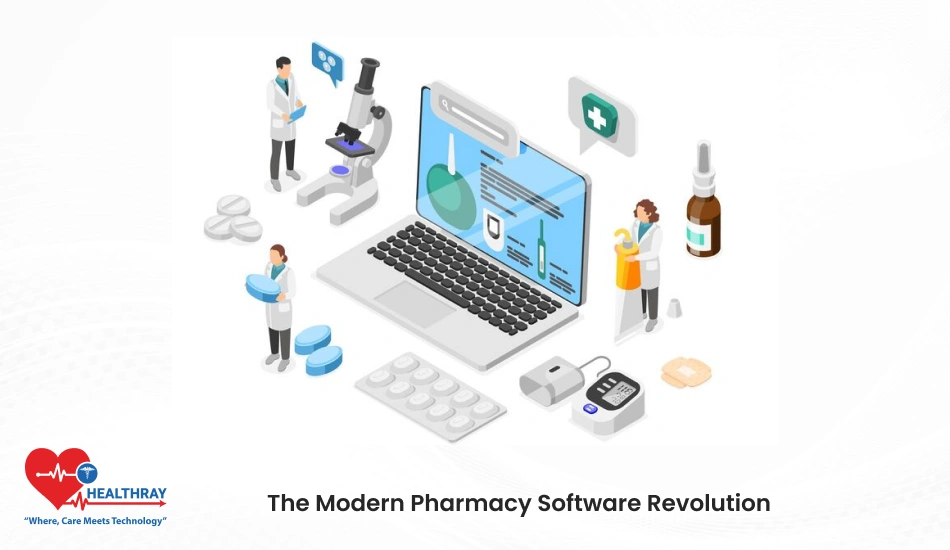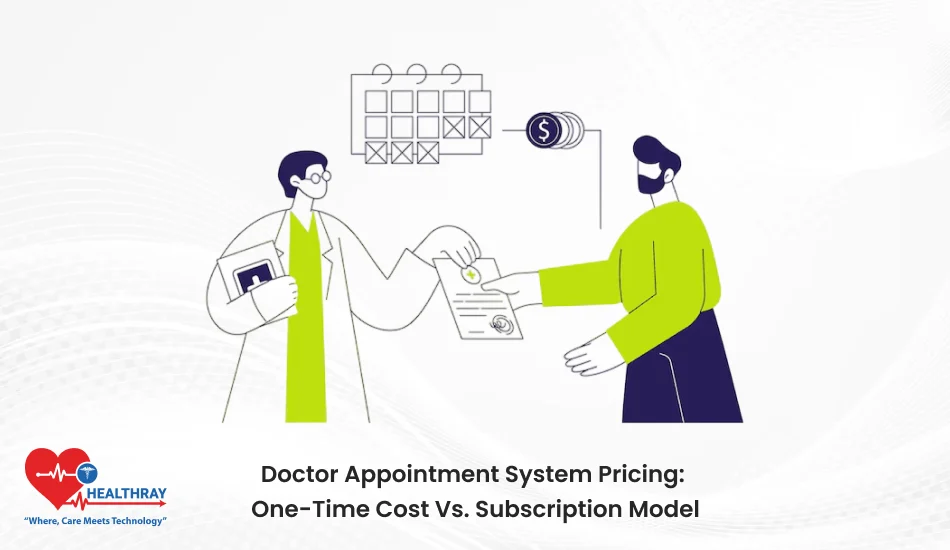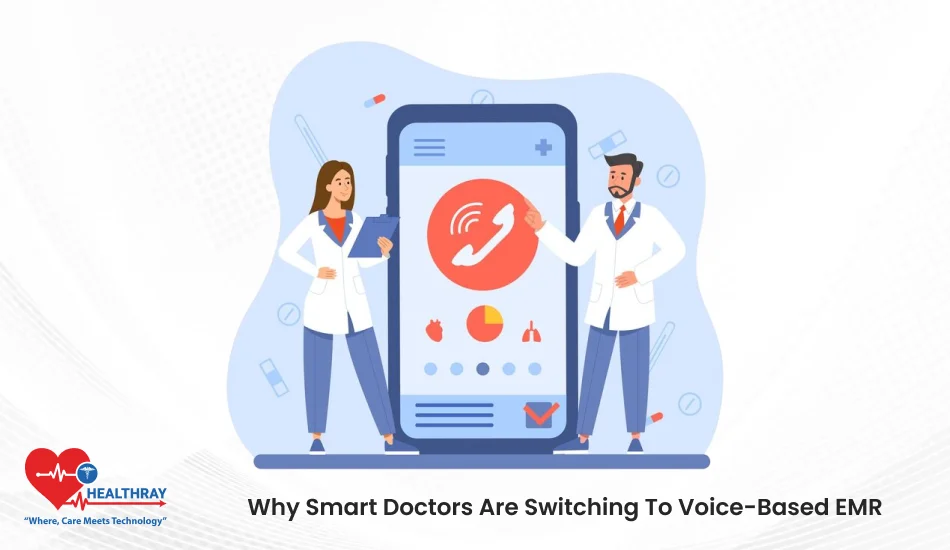Summary
As we know, Healthcare is a fast-paced environment, where every second is important. Staff should be capable of utilizing features of the patient management system such as appointment scheduling, EHR (Electronic Health Records), billing, and communication modules. This is possible only if training is role-specific, interactive, and ongoing. Additionally, it is essential to comprehend employee resistance, address their technical skills, and offer support during the training period. In this blog, I will discuss how to successfully train staff on the patient management system. Also, we will discuss how to set a foundation for long-term healthcare success. Let’s begin!!!
Introduction
Implementing a patient management system is a big milestone for medical sectors. It enhances efficiency, streamlines workflows, and takes patient care to a higher level.
But choosing the right software is not enough; to use it effectively, staff training is equally important. With proper training, healthcare professionals can utilize the full potential of its features, which ultimately reduces errors and improves productivity and fosters continuous improvements in culture. I am working as a senior consultant at St. Mary’s Community Hospital, Texas, USA.
My hospital firm adopted a hospital management system in their workflows; initially, staff got confused with the system and there were more errors. Additionally, a structured training program featuring role-based sessions, live demos, and ongoing support has been introduced by hospital executive management. Eventually, doctors and nurses start using this advanced software confidently.
Now, my hospital’s workflows are smooth, billing are accuarate and patients get top-notch experiences. I am truly grateful for hospital management software. Furthermore, with a structured training approach, you can avoid challenges in your medical operations, such as user errors, workflow disruption and resistance, etc. Most importantly, effective staff training can upgrade PMS from merely software upgrades to vital tools that simplify clinical workflows, improve patient engagement, and ensure compliance.
Steps to Train your Staff on Patient Management System
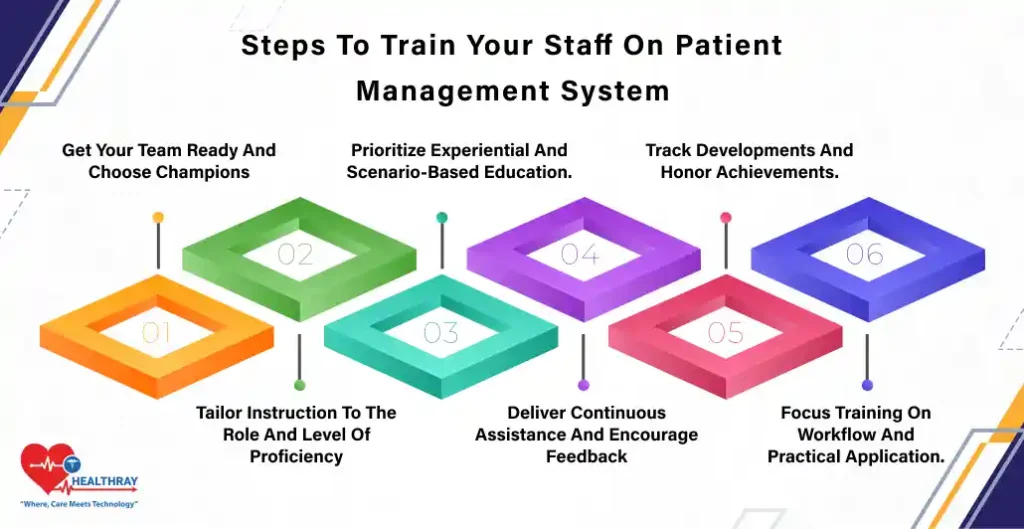
Let’s check it out:
Get your team ready and choose champions
It is important to do initial preparation before starting training. Firstly, try to understand employees in your team who are adept at understanding technical subjects and have leadership characteristics. Additionally, these internal staff members can serve as your champions or subject matter experts and will support you during the system transition.
Further, start involving these SMEs in the early stages, such as the system selection and design phase, so that they can understand the process thoroughly and support their colleagues wherever needed. Further, HMS like smart platforms, uses this approach to empower their staff.
Plus, make sure that training is the real priority in your firm. Further, you can fix some protected time for medical staff in their busy schedule without interrupting the patient care. When a healthcare expert receives information in an unobstructed environment, this levels up both their learning and confidence.
Tailor instruction to the role and level of proficiency
Every hospital team uses the patient management information system differently. That’s the reason a one-size-fits-all training approach is not effective most of the time. Further, administrative staff need to focus on appointment scheduling, billing, and patient registration. And, medical professionals need to understand electronic health records and clinical decision tools. Further, it is important to assess the technical skills and comfort levels of your team. Further, you need to design training tracks as per responsibilities, such as front desk, nursing staff, and physicians.
Additionally, you can focus on practical workflows and role-specific scenarios to make the training more practical and engaging. Further, use mixed formats for supporting different learning approaches such as interactive sessions, short e-learning courses, quick guides, and group training sessions. Moreover, when training modules are small and focused, so healthcare professionals can easily grasp the concepts in the middle of their shifts without any external pressure.
Step towards digital era with our healthcare solution
Revamp your hospital facilities and embrace change for better healthcare management. Ease in managing and organizing large medical datasets leads to effective analysis. Seize the opportunity now!
Prioritize experiential and scenario-based education
Staff members who are able to practically execute the system’s functions in addition to listening are the hallmarks of effective training. Further, with hands-on training, the team gets real workflow experiences, such as patient registration, billing process, and report generation, without holding the risks of real data.
Additionally, HMS provides this interactive training approach to make their users more confident. Further, you should design simulated patient management scenarios where staff can make mistakes in a safe environment and learn from them.
When employees constantly practice these processes, this will improve both their comfort level and system fluency. Further, during initial live use, encourage your staff to confirm their supervisors before making any critical data entries in the system. This will help you maintain strong accuracy, confidence, and collaborative effort in the system.
Deliver continuous assistance and encourage feedback
Training does not end even if the system goes live, as it is not a crash course; you need to train your employee consistently. Further, when your staff come across new features and real clinical scenarios, then they need reliable support during this phase. Therefore, it is crucial to establish a strong system with an internal help desk, expert users, and vendor guidance. Further, encourage your staff to regularly provide you feedback.
Frontline staff can provide you with useful insights, as they utilize the systems on a daily basis and thoroughly understand the practical issues. Furthermore, use this feedback base to conduct refresher training or quick learning tutorials. Additionally, when management actively listens and implements improvements, this levels up staff confidence and involvement. Overall, it creates a healthy continuous improvement culture in the medical domains.
Track developments and honor achievements
One of the most crucial steps that you need to follow after providing training is tracking staff progress, ensuring no employees are left behind. Further, use checklists, quizzes, and other software tracking tools to check which module has been completed. In addition, the team and individuals who have finished learning ahead of schedule and exhibit exceptional performance should be consistently rewarded for their excellence. Consequently, it boosts confidence and helps you build a strong learning culture in your firm.
Further, regular performance auditing is essential so that you can effortlessly recognize whether your employees still need extra guidance. Additionally, it provides management with assurance that training objectives are accomplished. In general, when healthcare organizations monitor the progress of their employees and celebrate their achievements, this naturally boosts staff confidence and engagement.
Focus training on workflow and practical application
Don’t keep your training content just limited to generic software features; make it align with your actual clinic workflows. Further, train your staff on how to effectively use the patient management system during peak hours, patients rounds and complex cases that they come across in their day-to-day duties. This levels up both learning relevance and retention in your firms.
Further, embed customized training prompts and helping guidelines to provide immediate help to staff whenever they need it. Additionally, keep accessible and quick reference material near workstations so that staff can efficiently and confidently use the system.
Overcoming Challenges in Staff Training
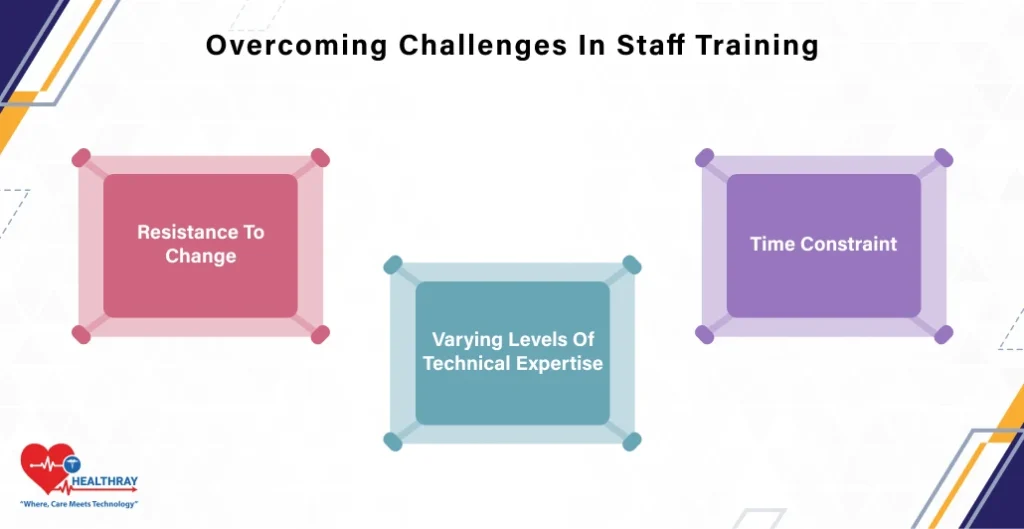
Let’s check out:
Resistance to change
Resistance is natural, especially for staff that are acquainted with the manual infrastructure. Further, to manage this situation, you should clearly highlight the tangible benefits of the patient management system to your employees, such as improved accuracy, time savings, and better patient care outcomes. Additionally, it is also important to actively engage the staff in the early and regular implementation process in order to successfully foster acceptance and ownership skills.
Varying levels of technical expertise
Every staff technology comfort level is not the same. Further, to deal with these challenges, conduct basic digital literacy refreshers before implementing system-specific training. Additionally, you should offer training in varied formats like hands-on sessions, video tutorials, or one-on-one coaching for less experienced users.
Time constraint
Healthcare staff frequently face challenges with balancing daily responsibilities and training. Further, you should schedule microlearning modules during downtime and record sessions for asynchronous access and establish protected learning times. This way you can improve staff participation without negatively impacting patient care.
Conclusion
Successfully training staff on a new patient management system requires a well-planned, role-specific, and continuous approach. By prioritizing preparation, customizing training, incorporating hands-on practice, providing ongoing support, and celebrating progress, healthcare organizations can ensure their teams quickly gain proficiency and confidence.
I hope the blogs mentioned above give you helpful advice on how to train employees on patient management systems and turn software into a potent tool that helps patients, staff, and providers all at once.
